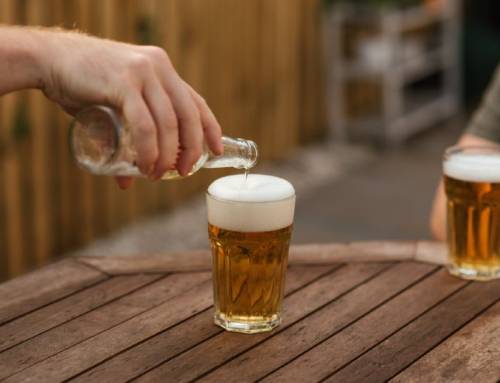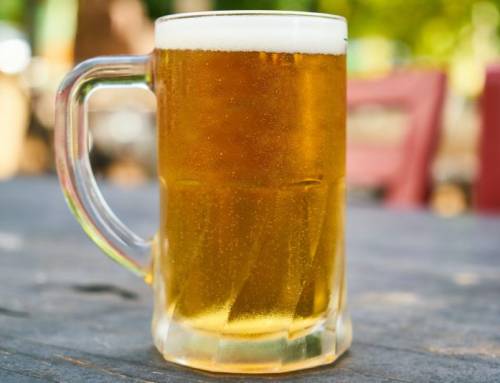Exploring the Intersection of Art and Functionality in Beer Glassware
What do beer glasses have to do with art? Well, as any beer aficionado knows, the right glass is essential for ensuring that your favorite brew tastes as good as it can. But, as it turns out, there’s a lot more to beer glassware than meets the eye. When it comes to glassware, the shape, size and design are just as important as the beer itself.
It’s easy to see how glasses can be artistic. Take a look at a few of the more unique designs: tulip-shaped glasses, mugs with intricate etchings, and specialty glasses that are molded to look like a stein or a tankard. Even the most basic pint glass is designed with a shape and thickness that is intended to enhance the flavor and aroma of the beer it holds.
But there’s more to it than just aesthetics. Beer glasses have been designed to maximize the flavor and aroma of the beer, and this is where the intersection of art and functionality comes into play. The shape and size of the glass is important for ensuring that the beer’s head is retained for as long as possible, and the thickness of the glass helps to keep the beer at the optimal temperature.
The design of the glassware can also affect the flavor of the beer. Certain designs, such as tulip-shaped glasses, are intended to trap the carbonation and aroma of the beer, while others, such as mugs, are designed to create a more intense flavor.
So, as it turns out, beer glassware isn’t just about aesthetics. It’s a combination of art and functionality, and it’s a design that is essential to ensure that your beer tastes as good as it can. It’s a testament to the ingenuity of beer aficionados everywhere, and it’s proof that beer is so much more than just a cold, delicious beverage.
How Different Beer Glassware Designs Affect Taste and Aroma
When it comes to beer, you can’t just pour it into any old glass and expect it to taste the same. In fact, the shape and size of your glassware can have a huge impact on the taste and aroma of your beer. In the world of craft beer, glassware is almost as important as the beer itself!
Take the pint glass, for example. This is probably the most commonly used beer glass, and it’s great for getting a good head on your drink. But have you ever noticed that the pint glass doesn’t really do much to bring out the flavor of the beer? That’s because the shape of the glass doesn’t really help the beer’s aroma come through.
On the other hand, the tulip glass is designed specifically to bring out the beer’s flavor. The shape of the glass helps to trap the aroma and lift it to your nose, giving you a much more intense aroma experience. And that’s not all – the shape of the tulip glass helps to keep the beer’s carbonation, giving it a fuller and more rounded taste.
Finally, there’s the snifter. This glass is designed to concentrate the beer’s aroma, making it a great choice for those of us who like to take our time when drinking a beer. The shape of the glass helps to keep the beer’s volatile aromas from escaping, allowing us to savor and appreciate the beer’s flavor.
So next time you’re enjoying a craft beer, make sure you pick the right glass for the job. After all, it could be the difference between a ho-hum beer and an unforgettable one!
The History and Evolution of Beer Glassware Design
Ah, beer glassware. A staple of any gathering of friends and family, it’s no wonder why beer glassware has been around for hundreds of years! But what may come as a surprise is that the design of beer glassware has changed quite a bit over the years.
Let’s start at the very beginning. It is believed by some historians that the very first beer glass was of the goblet variety. It was made of clay and had a small handle at the top. This style of beer glassware was used mainly by the ancient Greeks and Romans and was made to be a symbol of wealth and status. Flash forward a few centuries and we find ourselves in the Middle Ages, where the beer glass of choice was a large mug or tankard. This was a practical choice, as it was large enough to hold a large amount of beer and was also strong enough to withstand the high levels of carbonation used in beer making at the time.
Fast forward to the 19th century and we see the introduction of the pilsner glass. This was a tall, slender glass that was designed to showcase the color and clarity of the beer. It was also designed to help maintain the beer’s head, or foam, for as long as possible. This style of glassware was also designed to keep the beer cold longer, which was especially important during hot summer days.
The 20th century saw the introduction of the beer stein, which was popularized in Germany. This style of glass was made of ceramic and often featured a lid to help keep the beer cold and prevent bugs from getting in. The stein also had a handle, making it much easier to carry around.
Finally, we come to the 21st century and the modern beer glass. This style of glassware is designed to bring out the best flavors and aromas of the beer while also being stylish and contemporary. This style of glassware is often made of glass or crystal and often features intricate designs and patterns.
So there you have it, a brief look at the history and evolution of beer glassware design. From the goblet of the ancient Greeks to the modern beer glass of today, beer glassware has come a long way. There’s no doubt that it will continue to evolve in the years to come!
How Craft Brewers are Re-Inventing Beer Glassware Design
When you think of beer, you probably think of a cold one in an iconic glass mug. But craft brewers are shaking things up with a whole new world of beer glassware design. From quirky shapes and sizes to unique materials, craft brewers are re-inventing the way we enjoy a cold brew.
Take the tulip glass, for example. It’s a classic shape for a beer glass, but craft brewers have put their own spin on it by making it extra large and adding a handle. It’s a great way to enjoy a beer while still being able to hold onto it.
Or, how about the mason jar? Sure, it’s a great way to store leftovers, but it’s also a great way to enjoy a beer. Craft brewers have taken the humble mason jar and added a few tweaks, like a handle and a rubber seal, to turn it into a uniquely modern beer drinking vessel.
And then there’s the beer stein. It’s a classic shape, but craft brewers have taken it to the next level by adding fun designs and creative materials. From ceramic to glass to stainless steel, the stein is now an eye-catching way to enjoy a beer.
Craft brewers are also getting creative with beer bottles. Instead of the standard 12-ounce glass bottles, craft brewers are making oversized bottles in various shapes and sizes. They come in all sorts of designs, from tall and slim to short and squat.
The good news is that craft brewers are re-inventing beer glassware design in ways that are both fun and functional. Whether you’re looking for something to sip on or something to show off, there’s sure to be a beer glass out there that suits your tastes. So go ahead and raise a glass to craft brewers!
Conclusion
Brewing Visions: Art and Design in Beer Glassware is an important insight into the history and culture of beer glassware. It showcases the artistry and craftsmanship of beer glassware through the ages and highlights the importance of design and craftsmanship in the making of beer glassware. Through this book, readers gain a better understanding of the significance of beer glassware to the brewing industry, and how its design and decoration reflect the cultural influences and history of the art of making beer. The book also provides a valuable reference for anyone interested in the history, art, and design of beer glassware.





